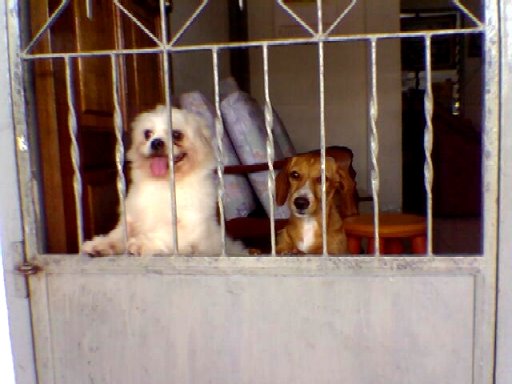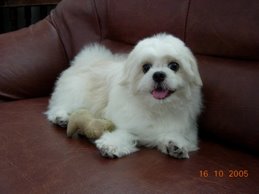Techniques Used In Dog Ligament Surgery
There are several causes of cruciate ligament injury in dogs. There are times when such injuries are the result of injuries sustained when the animal is attempting to run or jump and they land on the wrong foot. The chances of an obese or overweight dog being injured this way are higher. This is since their joints are weakened because of their weight. Dog ligament surgery involves a number of techniques.
The first very important thing to do is determine the presence of injury. In the beginning, the animal is not able to put their weight on one leg, as they become lame with time. Irrespective of the amount of rest the animal has, the lameness is bound to persist. Depending on the severity of the injury, the first 24 hours may be accompanied with swelling of joints.
There normally is every likelihood that pain will be experienced at the stifle whenever there is movement. However, if the injury took place some time prior to examination, such pain may not be too obvious. For diagnosis of dog cranial cruciate ligament rupture, there is performing of complete physical and orthopedic examination that focuses mostly on the affected leg.
Whereas surgery is one of the best modes of treatment, it is not recommended for small dogs. These are able to get treated through the use of painkillers. After such treatment, it is likely that the animal will develop arthritis. In order to strengthen thigh muscles when treatment is over, physical therapy is recommended. Large dogs are treated using surgical methods.
One option of surgery is lateral suture repair. This involves the use of a thick filament that resembles a fishing line. It is placed in such a way that it serves the function of the cranial cruciate ligaments. In so doing, stability is provided to the joint while the stifle heals. After the knee joint is opened, it is inspected and any ligaments that are torn removed.
In case the meniscus is torn, the portions that are damaged are removed. Thereafter, a suture is passed close to the fabella through a hole that is drilled at the front of the tibia. By tightening the joint, it prevents motion of the drawer and effectively takes over the functions of the cruciate ligaments.
All such problems in dogs can be treated using Tibia Plateau Leveling Osteotomy, TPLO. For this procedure, there is cutting of the tibia and the joint angle changed. Screws are then placed across the cut for purposes of altering mechanics of joints. In the process, the need for CCL to maintain stability is eliminated. The tibia is cut and rotated to boost the natural ability of the dog to bear its weight.Cruciate ligament remnants are supposed to be removed for severe damages.
In Tibial Tuberosity Advancement, TTA, the idea used is that whenever cruciate ligaments are torn, the tibial plateau ought to be repositioned at 90 degrees to each other if they are to combat the shear force generated whenever the dog walks. The leg affected will remain bandaged one week after surgery. The dogs should remain a bit docile during recovery. Thus depending on the injury experienced, there are several forms of dog ligament surgery.
The first very important thing to do is determine the presence of injury. In the beginning, the animal is not able to put their weight on one leg, as they become lame with time. Irrespective of the amount of rest the animal has, the lameness is bound to persist. Depending on the severity of the injury, the first 24 hours may be accompanied with swelling of joints.
There normally is every likelihood that pain will be experienced at the stifle whenever there is movement. However, if the injury took place some time prior to examination, such pain may not be too obvious. For diagnosis of dog cranial cruciate ligament rupture, there is performing of complete physical and orthopedic examination that focuses mostly on the affected leg.
Whereas surgery is one of the best modes of treatment, it is not recommended for small dogs. These are able to get treated through the use of painkillers. After such treatment, it is likely that the animal will develop arthritis. In order to strengthen thigh muscles when treatment is over, physical therapy is recommended. Large dogs are treated using surgical methods.
One option of surgery is lateral suture repair. This involves the use of a thick filament that resembles a fishing line. It is placed in such a way that it serves the function of the cranial cruciate ligaments. In so doing, stability is provided to the joint while the stifle heals. After the knee joint is opened, it is inspected and any ligaments that are torn removed.
In case the meniscus is torn, the portions that are damaged are removed. Thereafter, a suture is passed close to the fabella through a hole that is drilled at the front of the tibia. By tightening the joint, it prevents motion of the drawer and effectively takes over the functions of the cruciate ligaments.
All such problems in dogs can be treated using Tibia Plateau Leveling Osteotomy, TPLO. For this procedure, there is cutting of the tibia and the joint angle changed. Screws are then placed across the cut for purposes of altering mechanics of joints. In the process, the need for CCL to maintain stability is eliminated. The tibia is cut and rotated to boost the natural ability of the dog to bear its weight.Cruciate ligament remnants are supposed to be removed for severe damages.
In Tibial Tuberosity Advancement, TTA, the idea used is that whenever cruciate ligaments are torn, the tibial plateau ought to be repositioned at 90 degrees to each other if they are to combat the shear force generated whenever the dog walks. The leg affected will remain bandaged one week after surgery. The dogs should remain a bit docile during recovery. Thus depending on the injury experienced, there are several forms of dog ligament surgery.
About the Author:
Dog ligament surgery and many other procedures are performed at our animal hospital. To make an appointment with one of our experienced vets today, click here http://stageroadanimalhospital.com.
>














.jpg)






.jpg)

0 comments:
Post a Comment